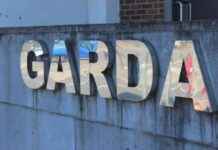Irish Unification Gaining Momentum
The debate over Irish unification has been a long-standing issue, with passionate arguments on both sides. In recent years, however, there has been growing momentum for Irish unity, especially in Northern Ireland. Contrary to some recent claims, support for reunification is actually on the rise, according to the latest data from the Northern Ireland Life and Times (NILT) annual surveys.
Support for Irish Unity on the Rise
One of the key measures used to gauge support for Irish unity is the question of whether respondents would prefer Northern Ireland to remain part of the UK or reunify with the Republic of Ireland in the long term. The NILT surveys have shown a steady increase in support for reunification since 2020. The percentages supporting Irish unity over the past four years have been 25.8%, 29.7%, 31.3%, and 29.1%, respectively. Similarly, when asked if they would vote for reunification in a referendum tomorrow, the numbers have been 29.7%, 33.8%, 34.9%, and 35.3%, showing a consistent upward trend.
While the year-to-year differences may fall within the surveys’ margins of error, the overall trend is clear – support for Irish unity is not declining, as some have suggested. In fact, 2020 was not the high point for pro-reunification polling numbers, as claimed by Philip McGuinness, but rather represents a low point in comparison to the latest data.
Shifting Attitudes Among Alliance Supporters
One crucial aspect of any potential border poll is the stance of “Other voters,” including supporters of the Alliance Party. Over the past four years, there has been a noticeable shift in constitutional attitudes among Alliance voters towards a pro-unity direction. In 2020, 47.6% of Alliance supporters indicated they would vote for union in a border poll, while 32.9% stated they would support unity, resulting in a net preference for union of 14.7 percentage points. However, by 2023, the net preference for union had decreased significantly to just 4.8 percentage points, with support for unity rising and support for union falling by nearly equal amounts. This shift indicates that even within a crucial constituency like Alliance supporters, the once significant lead for union in a potential referendum is diminishing.
While union still maintains a lead among Alliance voters, the gap is narrowing, signaling a potential shift in attitudes towards Irish unity within this key group. These changing attitudes among Alliance supporters further reinforce the overall trend of growing support for reunification in Northern Ireland.
Challenges and Opportunities for Irish Unification
The path towards Irish unification is not without its challenges. Political, social, and economic factors all play a role in shaping attitudes towards reunification. Brexit has also added a new dimension to the debate, with concerns about the impact of a hard border between Northern Ireland and the Republic of Ireland.
However, despite these challenges, there are also opportunities for progress towards Irish unity. The increasing support for reunification among various demographic groups, as evidenced by the NILT surveys, indicates a shifting landscape in Northern Ireland. The younger generation, in particular, has shown greater interest in Irish unity, reflecting a changing mindset among future voters.
Moreover, the changing attitudes among Alliance supporters highlight the potential for broader political realignment in Northern Ireland. As traditional barriers to Irish unity begin to erode, there is a growing sense of openness and willingness to consider alternative constitutional arrangements.
The Road Ahead for Irish Unity
As the debate over Irish unification continues to evolve, it is essential to consider the latest data and trends indicating growing support for reunification in Northern Ireland. The NILT surveys provide valuable insights into the shifting attitudes of the population towards Irish unity, highlighting the need for a nuanced understanding of the complexities surrounding this issue.
While challenges remain, including the need for cross-community dialogue and consensus-building, the momentum towards Irish unity is unmistakable. The changing attitudes among key demographic groups, such as Alliance supporters, suggest a potential realignment in the political landscape of Northern Ireland, with implications for the future of the region.
In conclusion, the latest data from the NILT surveys paints a clear picture of increasing support for Irish unity in Northern Ireland. Contrary to some claims, 2020 was not the high point for pro-reunification polling numbers, but rather represents a turning point towards greater openness and willingness to consider alternative constitutional arrangements. As the debate over Irish unification continues, it is crucial to acknowledge and respond to the changing attitudes and dynamics shaping the future of Northern Ireland.












